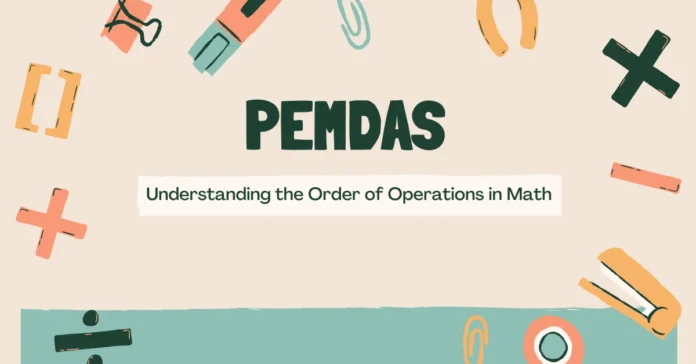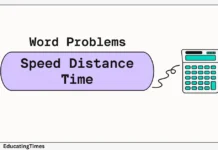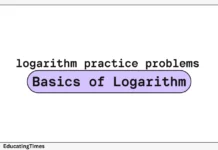PEMDAS
Order of operations, also known as PEMDAS, is a set of rules that tells you which mathematical operation to perform first in a given expression.
PEMDAS stands for:
P – Parentheses
E – Exponents
M – Multiplication
D – Division
A – Addition
S – Subtraction
The order of these letters tells you the order in which you should perform the operations. Here’s how it works:
First, you perform any calculations inside parentheses. If there are multiple sets of parentheses, you start with the innermost set and work your way out.
Next, you evaluate any exponents (i.e., numbers with superscripts).
Then, you perform multiplication and division, working from left to right. If there are no multiplication or division operations in the expression, you skip this step.
Finally, you perform addition and subtraction, working from left to right. If there are no addition or subtraction operations in the expression, you skip this step.
Example
6 + 3 x 2^2 / (1 + 2)
First, we look for any parentheses.
There aren’t any, so we move on to exponents. 2^2 = 4.
6 + 3 x 4 / (1 + 2)
Next, we perform multiplication and division,
working from left to right. 3 x 4 = 12.
6 + 12 / (1 + 2)
Now we perform addition and subtraction,
working from left to right. 12 / (1 + 2) = 4.
6 + 4
Finally, we add 6 and 4 to get the answer, which is 10.
So, the solution to the expression 6 + 3 x 2^2 / (1 + 2) using PEMDAS is 10.
Note,following the order of operations is crucial to getting the correct answer in any math problem.
1.Evaluate 4 + 2 x 3 – 5
Solution:
Start with multiplication: 2 x 3 = 6.
Then evaluate addition and subtraction in order from left to right:
4 + 6 – 5 = 5.
Answer: 5.
Requested by: Ali Akbar
2.Evaluate 10 – 3 x 2 + 8 / 4
Solution:
Start with multiplication: 3 x 2 = 6.
Then evaluate division: 8 / 4 = 2.
Then evaluate addition and subtraction in order from left to right:
10 – 6 + 2 = 6.
Answer: 6.
Requested by: Hameed
3.Evaluate (6 – 3) x 5 + 7
Solution:
Start with parentheses: 6 – 3 = 3.
Then evaluate multiplication: 3 x 5 = 15.
Then evaluate addition: 15 + 7 = 22.
Answer: 22.
Requested by: Asadullah
4.Evaluate 20 / (4 – 2) + 3 x 2
Solution:
Start with parentheses: 4 – 2 = 2.
Then evaluate division: 20 / 2 = 10.
Then evaluate multiplication: 3 x 2 = 6.
Then evaluate addition: 10 + 6 = 16.
Answer: 16.
Requested by: Kabeer
5.Evaluate (4 + 5) x (3 – 1)
Solution:
Start with parentheses: 4 + 5 = 9 and 3 – 1 = 2.
Then evaluate multiplication: 9 x 2 = 18.
Answer: 18.
Requested by: Asadullah
6.Evaluate 6 x (5 + 3) – 7 / 2
Solution:
Start with parentheses: 5 + 3 = 8.
Then evaluate multiplication: 6 x 8 = 48.
Then evaluate division: 7 / 2 = 3.5.
Finally, evaluate subtraction: 48 – 3.5 = 44.5.
Answer: 44.5
Requested by: Asadullah
7.Evaluate 12 / 3 + 8 x 2 – 7
Solution:
Start with division: 12 / 3 = 4.
Then evaluate multiplication: 8 x 2 = 16.
Then evaluate addition and subtraction in order from left to right: 4 + 16 – 7 = 13.
Answer: 13.
Requested by: Ali Akbar
8.Evaluate 7 x 2 + 3 / (5 – 3)
Solution:
Start with parentheses: 5 – 3 = 2.
Then evaluate division: 3 / 2 = 1.5.
Then evaluate multiplication: 7 x 2 = 14.
Finally, evaluate addition: 14 + 1.5 = 15.5.
Answer: 15.5.
Requested by: Asadullah
9.Evaluate (4 x 5) + 2 / 3 – 1
Solution:
Start with multiplication: 4 x 5 = 20.
Then evaluate division: 2 / 3 = 0.6666 (rounded to four decimal places).
Then evaluate addition and subtraction 20 + 0.6666 – 1 = 19.6666
Answer: 19.6666.
Requested by: Aakash
10.Evaluate 6 x 2 – 5 / (3 + 1)
Solution:
Start with parentheses: 3 + 1 = 4.
Then evaluate division: 5 / 4 = 1.25.
Then evaluate multiplication: 6 x 2 = 12.
Finally, evaluate subtraction: 12 – 1.25 = 10.75.
Answer: 10.75.
Requested by: Aakash
11.Evaluate (7 – 2) x 3 + 6 / 2
Solution:
Start with parentheses: 7 – 2 = 5.
Then evaluate multiplication: 5 x 3 = 15.
Then evaluate division: 6 / 2 = 3.
Finally, evaluate addition: 15 + 3 = 18.
Answer: 18.
Requested by: Asadullah
12.Evaluate 10 / 2 x 3 + 8 – 2 x 5
Solution:
Start with division: 10 / 2 = 5.
Then evaluate multiplication: 5 x 3 = 15 and 2 x 5 = 10.
Then evaluate addition and subtraction 15 + 8 – 10 = 13.
Answer: 13.
Requested by: Aakash
13.Evaluate (4 + 2) x 3 – 5 x 2
Solution:
Start with parentheses: 4 + 2 = 6.
Then evaluate multiplication: 6 x 3 = 18 and 5 x 2 = 10.
Finally, evaluate subtraction: 18 – 10 = 8.
Answer: 8.
Requested by: Ali Akbar
13.Evaluate 9 + 6 x (8 – 3) / 2
Solution:
Start with parentheses: 8 – 3 = 5.
Then evaluate division: 6 x 5 / 2 = 15.
Finally, evaluate addition: 9 + 15 = 24.
Answer: 24.
Requested by: Asadullah
14.Evaluate 7 + 5 x 2 – 3 / 2
Solution:
Start with multiplication: 5 x 2 = 10.
Then evaluate division: 3 / 2 = 1.5.
Finally, evaluate addition and subtraction 7 + 10 – 1.5 = 15.5.
Answer: 15.5.
Requested by: Asadullah
📲 Join Our WhatsApp Channel
Get the latest education news, exam updates & career tips instantly.
✅ Join Now











